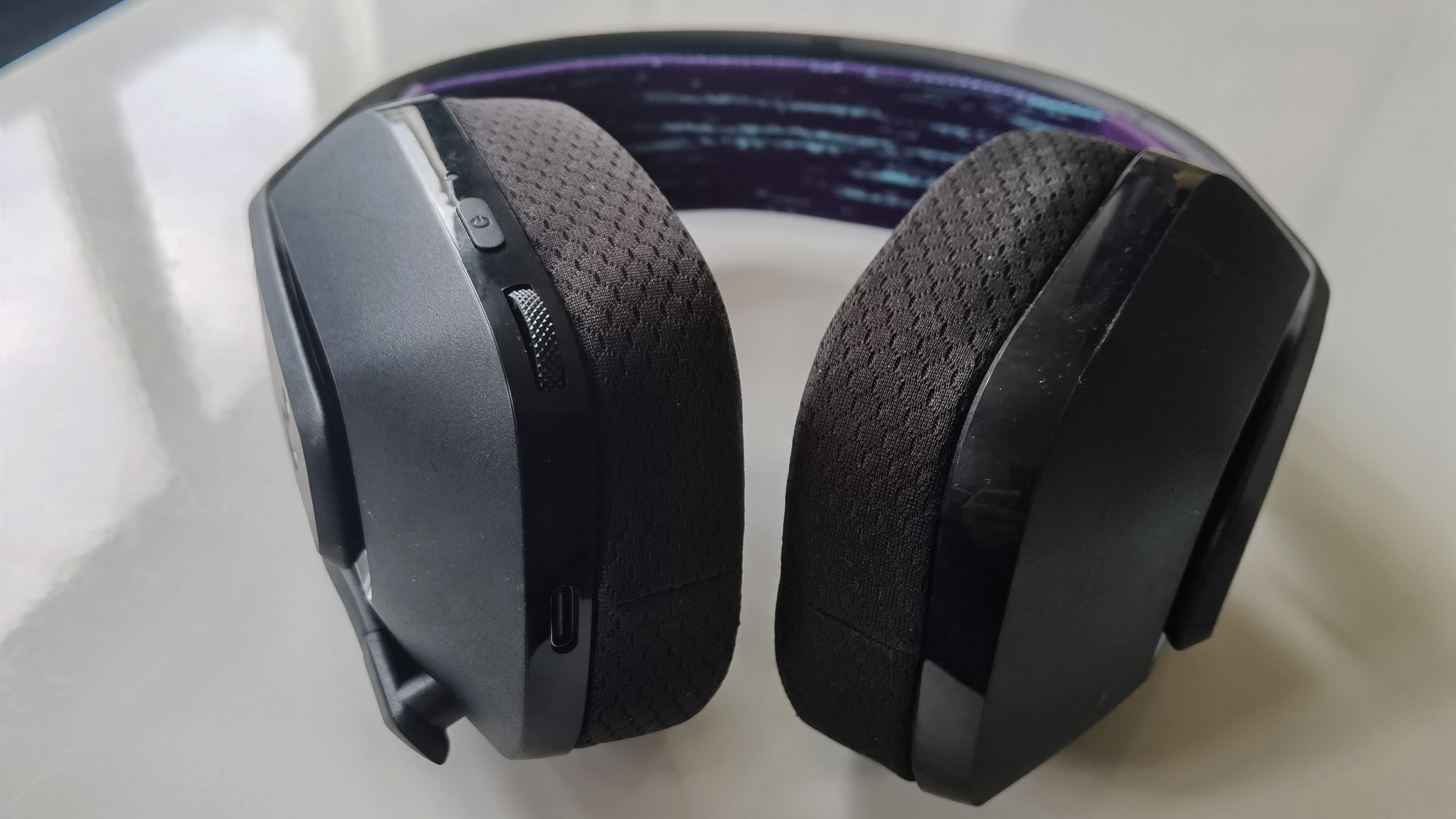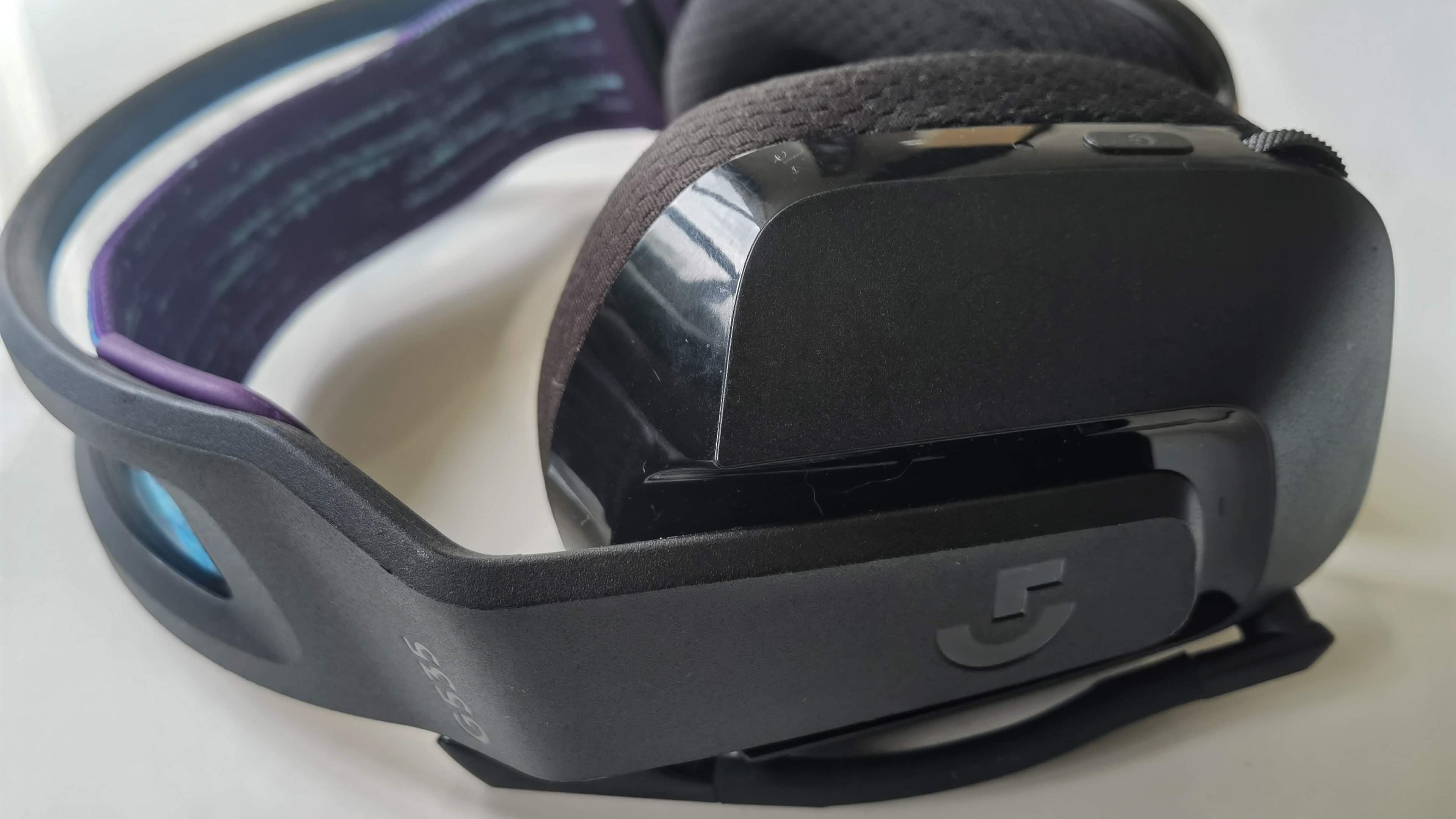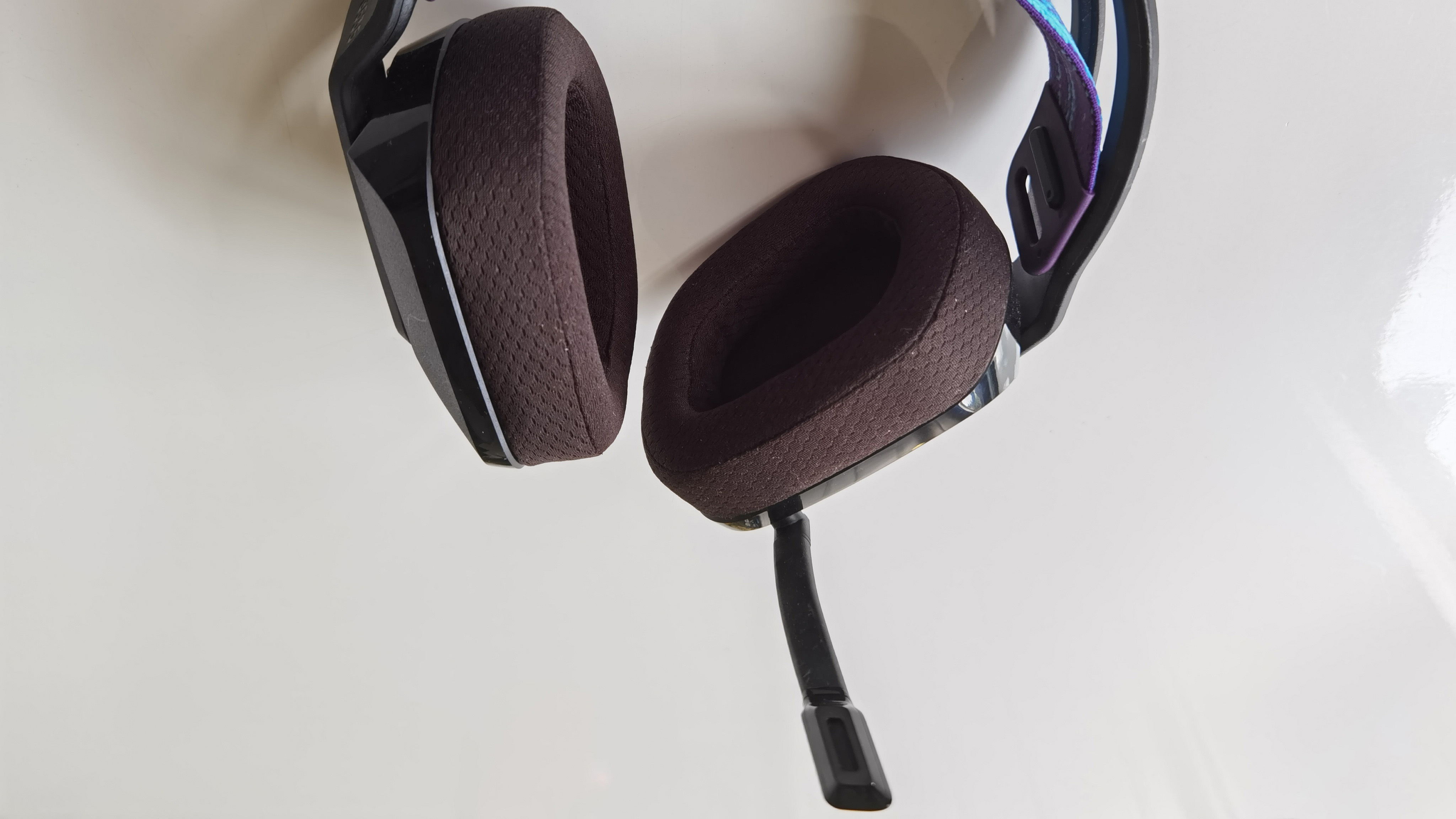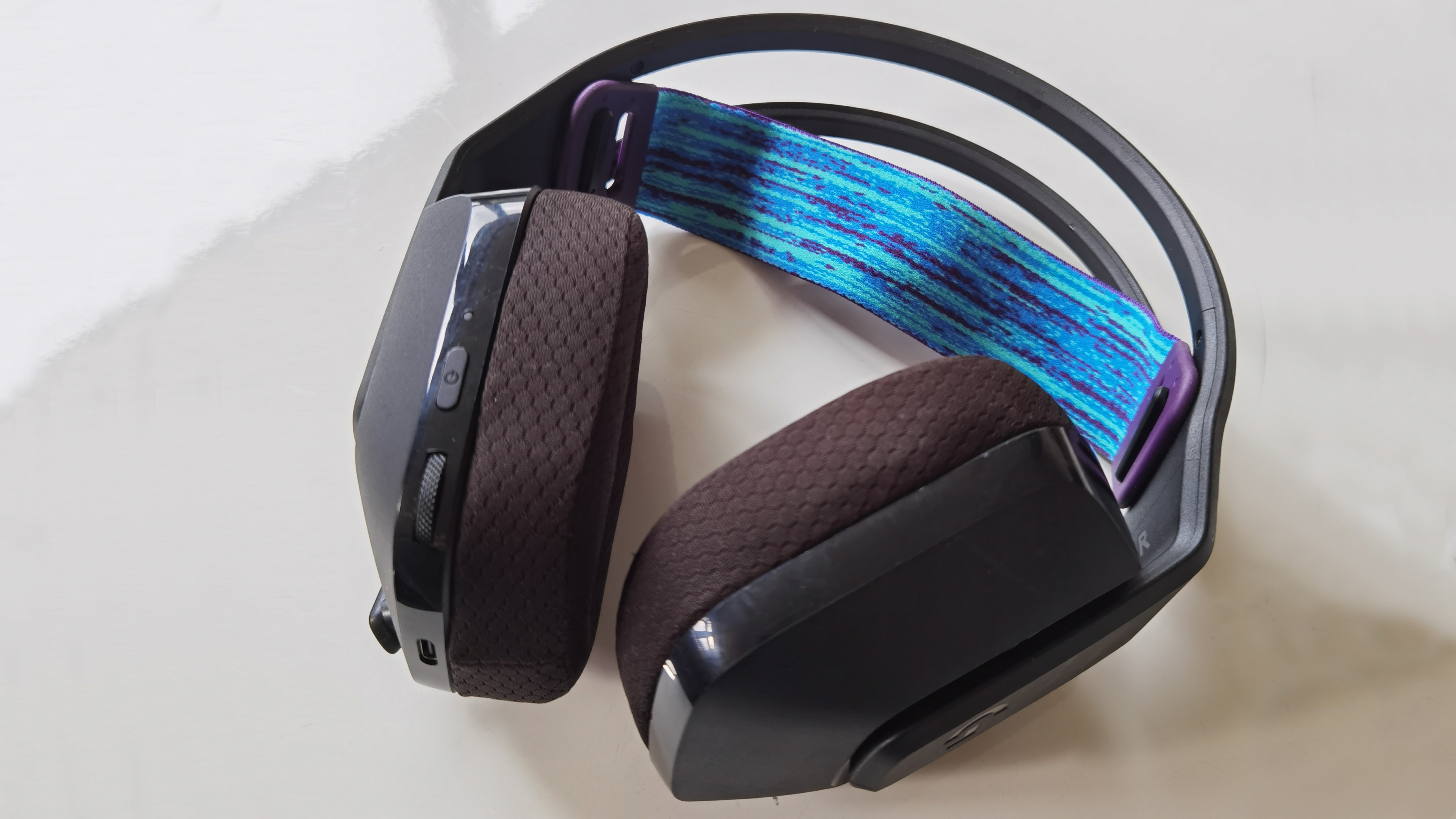Logitech G535 Lightspeed review: a dependable gaming headset
Robust build quality makes the G535 Lightspeed a comfortable, dependable headset from Logi – even if it lacks some higher-end features


The Logitech G535 Lightspeed is a solid, good-value headset which has feature gaps but plenty of quality for the price.
-
+
Extremely robust
-
+
Sounds good for the price
-
+
Works nicely with PlayStations and PC
-
-
No native surround sound support
-
-
Microphone lacks noise-cancellation
-
-
Incompatible with Microsoft consoles
Why you can trust T3
The vast majority of gamers pursue their chosen hobby for sheer enjoyment – for all the noise about esports and pro-gaming careers, very few have the time, raw talent or inclination to pursue such lofty ambitions.
Logitech’s G535 Lightspeed wireless gaming headset tacitly acknowledges that: its modus operandi is to do the basics as well as possible, without packing itself with exotic features that would drive up its price. In that context, it’s a roaring success.
Logitech G535 Lightspeed: Price & availability

Logitech’s G535 Lightspeed wireless gaming headset can be purchased now, at a price of $99.99/£109.00/€129.00/AUD249.95 – if you’re based in the US, you’re in luck, since it’s currently on sale, as you can see from the shopping widget embedded below.
Logitech G535 Lightspeed review: Specification

Bearing in mind its reasonable price, the G535 Lightspeed has a feature set to match – that is, one with some glaring gaps. The two most obvious being a lack of built-in surround-sound and an absence of noise-cancellation for its microphone. Those gaps, however, didn’t necessarily prove problematic in real-life use.
Replaying Final Fantasy VII Remake on the PlayStation 4, for example, it could still take advantage of the surround-sound hard-wired into the game design – in that game, you’re constantly walking past non-player characters having conversations, and with the G535 Lightspeed we could clearly hear the general direction from which their comments were coming. But in close-up conversations in the same game the surround-sound effect was somewhat lacking in precision.
Playing Destiny 2 and Apex Legends confirmed that while you get a sense of the general direction of incoming enemies, there’s a lack of tight precision on that front. So hardcore first-person shooter players will probably want to opt for a headset with better surround-sound support.
A couple of Google Meets calls using the G535 Lightspeed confirmed that its microphone performs well, even in noisy situations. The boom mic, which can be flipped up if you want to turn it off, is quite short and seems to be the perfect length to pick up whatever noise comes out of your mouth rather than anything extraneous. The G535 Lightspeed is, says Logitech, Discord Certified, which surely wouldn’t be the case if its microphone element was at all below par.
Get all the latest news, reviews, deals and buying guides on gorgeous tech, home and active products from the T3 experts

Battery life is a respectable though not overly impressive 33 hours, so even with the heaviest use, it should yield four to five days of gaming before you need to plug it in via the USB-C cable which is provided.
Sound quality is delivered via 40mm drivers, which are probably better than you would expect to find in a gaming headset which is as competitively priced as the G535 Lightspeed. The best gaming headsets on the market tend be equipped with 50mm drivers, which can generally be relied upon to provide super-extended bass which is beyond the G535 Lightspeed’s capabilities.
Yet it still sounds great: its bass is still punchy and deep, and its midrange and top-end are transparent and precise without any obvious gaps. It has a realistic, neutral sound, which copes well with in-game music, sound-effects and dialogue alike. Spending an extra hundred notes on a headset will yield a more dynamic, dramatic sound, but for that sort of money you could buy another G535 Lightspeed for someone else.
Logitech G535 Lightspeed review: Design & Performance

Design-wise, the G535 Lightspeed is pretty distinctive-looking if you have never previously clapped eyes on one of Logitech’s lower-end gaming headsets: its earcups have a lozenge-like shape to them, and it has an adjustable inner headband which can be reversed, and is blue on one side and purple on the other. Two clips on either side of the outer headband, combined with two slots on each end of the inner headband, allow about an inch of adjustability to accommodate different head sizes.
The G535 Lightspeed is pretty light for a gaming headset, at 236 grams. This, in combination with a decent amount of adjustability and earcups lined with memory foam, means it scores very highly in terms of comfort. We put in some intense sessions on Final Fantasy VII Remake, playing for several hours at a stretch, and it never felt remotely uncomfortable at any point. Without doubt, it would be a fine headset for keen MMO players (for whom accurate surround-sound isn’t likely to be a priority).
The G535 Lightspeed uses Logitech’s tried, tested and latency-free Lightspeed wireless dongle, which operates in a fuss-free and efficient manner. Because of the vagaries of Microsoft’s and Nintendo’s certification procedures, it won’t work with any Xboxes or the Switch, but it does work beautifully on a PlayStation 4 or 5 – we didn’t even have to select it as the external sound hardware system for the PS4 on which we tested it; as soon as we plugged the dongle in, it found it and switched to it automatically.
The G535 Lightspeed’s fit and finish aren’t as luxurious as you might find in more expensive headsets: it has a utilitarian feel to it, being mostly constructed from tough black plastic. Although that plastic cleverly alternates between matte and shiny textures, so it manages to avoid feeling cheap. And there’s no doubt it’s highly durable, which is vital for a gaming headset – if you’re prone to chucking your headset around the room after being forced into a rage-quit or whatever, you can be pretty sure it will take any abuse you throw its way without getting dented or disfigured in any way.
Logitech G535 Lightspeed review: Verdict

The Logitech G535 Lightspeed, in the general gaming headset scheme of things, is a workhorse. It doesn’t bother with fripperies like looking glamorous, or even features that you might happily pay for without actually using. But it does the basics very well: it sounds really good in an unflashy manner, it’s super-comfortable, its battery life is long enough to be thoroughly practical, and it’s built to last a very long time indeed, even if subjected to abuse.
If it were a person, it would be your most self-effacing and dependable friend, with a tendency to shun the limelight but to be there when you need them most. As long as you’re not a hardcore first-person shooter player with vague esports ambitions, it should service you perfectly well, in an unfussy and loyal manner.
Also consider
SteelSeries’ Arctis 1 Wireless has a very similar price and specification and also works with the Nintendo Switch.
Turtle Beach’s Elite Atlas Aero costs a little more than the Logi, but adds native 3D audio, and comes with the option of operating in a wired configuration, which allows it to be used with Microsoft’s consoles.
HyperX’s Cloud Core also adds Dolby 7.1 surround sound, and as it has been on the market for a while, and can be found for a similar price to the Logi.